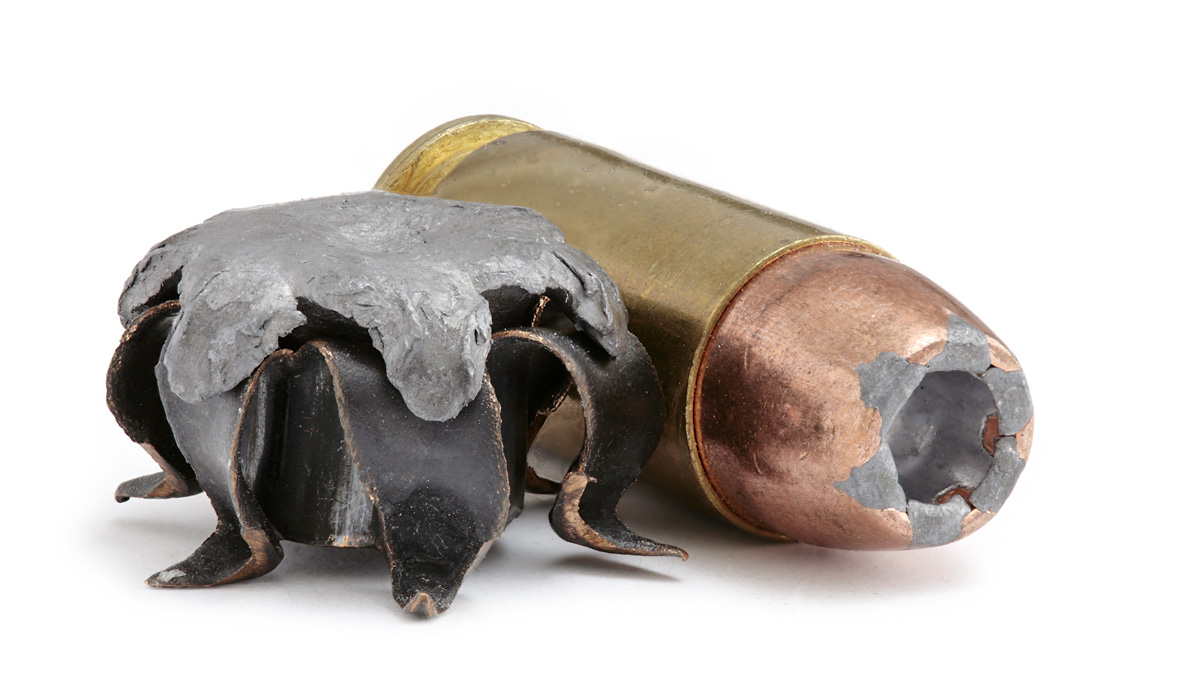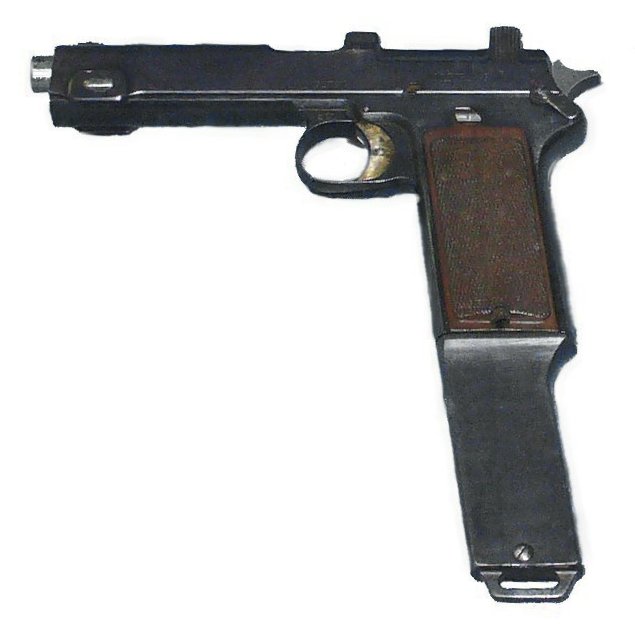|
Glock
Glock (; stylized as GLOCK) is a brand of polymer- framed, short-recoil-operated, striker-fired, locked-breech semi-automatic pistols designed and produced by Austrian manufacturer Glock Ges.m.b.H. The firearm entered Austrian military and police service in 1982 after becoming the top performer in reliability and safety tests. Glock pistols have become the company's most profitable line of products, and have been supplied to national armed forces, security agencies, and police forces in at least 48 countries. Glocks are also popular among civilians for recreational shooting, competition shooting, and self-defense. History The company's founder and head engineer, Gaston Glock (1929–2023), had no experience with firearms design or manufacture at the time his first pistol, the Glock17, was being prototyped. Glock had extensive experience in advanced synthetic polymers, which was instrumental in the company's design of the first commercially successful line of pistols ... [...More Info...] [...Related Items...] OR: [Wikipedia] [Google] [Baidu] [Amazon] |
Gaston Glock
Gaston Glock (; 19 July 1929 – 27 December 2023) was an Austrian engineer and businessman. He founded the company Glock. When he entered the 1980 competition for a new Austrian service pistol, he hired two engineers who had worked on the development of HK's first two polymer-frame pistols, the VP70 and P9 models. The first Glock pistol, chambered in 9x19mm and named the Glock 17 because it was Glock's 17th patent, entered Austrian military and police service in 1982. It became one of the most influential and popular handguns of the 20th century, leading to a succession of other models in a variety of sizes and chamberings as well as an industry-wide trend toward polymer-frame, striker-fired pistols. Early life Glock was born in Vienna on 19 July 1929. He had not handled a gun since he was conscripted into the Wehrmacht as a teenager near the end of World War II, after which he graduated from school as an engineer and joined a hand drill company. Manufacturing Glock began as ... [...More Info...] [...Related Items...] OR: [Wikipedia] [Google] [Baidu] [Amazon] |
45 GAP
The .45 GAP (Glock Auto Pistol) or .45 Glock (11.43×19mmRB) is a pistol cartridge designed by Ernest Durham, an engineer with CCI/Speer, at the request of firearms manufacturer Glock to provide a cartridge that would equal the power of the .45 ACP, have a stronger case head to reduce the possibility of case neck blowouts, and be shorter to fit in a more compact handgun. The .45 GAP is the first commercially introduced cartridge that has been identified with Glock. Development The .45 GAP has the same diameter as the .45 ACP pistol cartridge but is slightly shorter, and uses a small-pistol primer instead of the large-pistol primer most commonly used in .45 ACP ammunition. Originally, the maximum bullet weight of the .45 GAP was . In order to provide terminal ballistics that matched the standard .45 ACP loads, the .45 GAP was designed to operate at a higher standard pressure—roughly equivalent to the higher pressures found in .45 ACP "+P" rounds. Since the .45 GAP has a mu ... [...More Info...] [...Related Items...] OR: [Wikipedia] [Google] [Baidu] [Amazon] |
40 S&W
The .40 S&W (10.2×22mm) is a Rim (firearms), rimless pistol Cartridge (firearms), cartridge developed jointly by American firearms manufacturers Smith & Wesson and U.S. Repeating Arms Company, Winchester in 1990. The .40 S&W was developed as a law enforcement cartridge designed to duplicate performance of the Federal Bureau of Investigation's (FBI) reduced-velocity 10mm Auto cartridge which could be retrofitted into medium-frame (9 mm size) semi-automatic handguns. It uses bullets ranging in weight from .''Hornady Handbook of Cartridge Reloading'', Fourth Edition (1991), pp. 593–595 History In the aftermath of the 1986 FBI Miami shootout, in which two FBI special agents were killed and five wounded, the FBI started the process of testing 9×19mm Parabellum and .45 ACP ammunition in preparation to replace its standard-issue revolver with a semi-automatic pistol. The semi-automatic pistol offered two advantages over the revolver: increased ammunition capacity and increased e ... [...More Info...] [...Related Items...] OR: [Wikipedia] [Google] [Baidu] [Amazon] |
10mm Auto
The 10mm Auto (also known as the 10×25mm, official C.I.P. nomenclature: 10 mm Auto, official SAAMI nomenclature: 10mm Automatic) is a powerful and versatile semi-automatic pistol cartridge introduced in 1983. Its design was adopted and later produced by ammunition manufacturer FFV Norma AB of Åmotfors, Sweden. The 10mm was selected for service by the Federal Bureau of Investigation (FBI) in 1989 in the aftermath of the 1986 FBI Miami shootout. During the testing and development process, the FBI Firearms Training Unit developed a downloaded version of the 10mm cartridge which they felt provided adequate performance while minimizing recoil and muzzle blast. It is commonly claimed that this reduced loading was developed as the result of complaints or training problems involving agents who were issued the 10mm, but the reduced loading was developed before any pistols were issued. The cartridge was later decommissioned (except for use by the Hostage Rescue Team and S ... [...More Info...] [...Related Items...] OR: [Wikipedia] [Google] [Baidu] [Amazon] |
Semi-automatic Pistol
A semi-automatic pistol (also called a self-loading pistol, autopistol, or autoloading pistol) is a repeating firearm, repeating handgun that automatically ejects and loads cartridge (firearms), cartridges in its chamber (firearms), chamber after every shot fired, but only one round of ammunition is fired each time the Trigger (firearms), trigger is pulled. The pistol's fire control group disconnects the trigger mechanism from the firing pin/striker until the trigger has been released and reset manually, unlike the self-cycled firing mechanism in machine pistol, fully automatic pistols. A semi-automatic pistol recycles part of the energy released by the propellant combustion to move its bolt (firearm), bolt, which is usually housed inside the pistol slide, slide. After a round of ammunition is fired, the spent cartridge casing is extracted and ejected as the slide/bolt moves rearwards under recoil, the hammer (firearms), hammer/striker is cocked by the slide/bolt movement, and a ... [...More Info...] [...Related Items...] OR: [Wikipedia] [Google] [Baidu] [Amazon] |
Machine Pistol
A machine pistol is a handgun that is capable of automatic firearm, fully automatic fire, including shoulder stock, stockless handgun-style submachine guns. The Austrians introduced the world's first machine pistol, the Steyr M1912 pistol#Maschinenpistole M.12 Patrone 16, ''Steyr Repetierpistole'' M1912/P16, during World War I. The Germans also experimented with machine pistols, by converting various types of semi-automatic pistols to full-auto, leading to the development of the first practical submachine guns. During World War II, machine pistol development was widely disregarded in favor of submachine gun mass-production. After the war, machine pistol development was limited and only a handful of manufacturers would develop new designs, with varying degrees of success. This concept would eventually lead to the development of the personal defense weapon or PDW. Today, machine pistols are considered special-purpose weapons with limited utility, with their original niche being fi ... [...More Info...] [...Related Items...] OR: [Wikipedia] [Google] [Baidu] [Amazon] |
380 ACP
The .380 ACP ( Automatic Colt Pistol), also known as .380 Auto, .380 Automatic, or 9×17mm, is a rimless, straight-walled pistol cartridge that was developed by firearms designer John Moses Browning. The cartridge headspaces on the mouth of the case.Wilson, R. K. ''Textbook of Automatic Pistols'', p. 241. Plantersville, SC: Small Arms Technical Publishing Company, 1943. It was introduced in 1908 by Colt, for use in its new Colt Model 1903 Pocket Hammerless semi-automatic, and has been a popular self-defense cartridge ever since, seeing wide use in numerous handguns (typically smaller weapons). Other names for .380 ACP include 9mm Browning, 9mm Corto, 9mm Kurz, 9mm Short, and 9mm Browning Court (which is the C.I.P. designation). It should not be confused with .38 ACP. The .380 ACP does not strictly conform to cartridge naming conventions, named after the diameter of the bullet, as the actual bullet diameter of the .380 ACP is .355 inches. Design The .380 ACP cartridge w ... [...More Info...] [...Related Items...] OR: [Wikipedia] [Google] [Baidu] [Amazon] |
45 ACP
The .45 ACP (Automatic Colt Pistol), also known as .45 Auto, .45 Automatic, or 11.43×23mm is a Rim (firearms)#Rimless, rimless straight-walled handgun Cartridge (firearms), cartridge designed by John Moses Browning in 1904, for use in his prototype Colt's Manufacturing Company, Colt semi-automatic pistol. After successful military trials, it was adopted as the standard chambering for Colt's M1911 pistol. The round was developed due to a lack of stopping power experienced in the Moro Rebellion in places like Sulu. The issued ammunition, .38 Long Colt, had proved inadequate, motivating the search for a better cartridge. This experience and the Thompson–LaGarde Tests of 1904 led the Army and the Cavalry to decide that a minimum of .45 caliber was required in a new handgun cartridge. The standard-issue military .45 ACP cartridge uses a round-nose bullet at approximately fired from a government-issue M1911A1 pistol. It operates at a relatively low maximum chamber pressure rating ... [...More Info...] [...Related Items...] OR: [Wikipedia] [Google] [Baidu] [Amazon] |
Receiver (firearms)
In firearms terminology and law, the firearm frame or receiver is the part of a firearm which integrates other components by providing housing (engineering), housing for internal action (firearms), action components such as the hammer (firearms), hammer, bolt (firearms), bolt or breechblock, firing pin and extractor (firearms), extractor, and has screw thread, threaded interfaces for externally attaching ("receiving") components such as the gun barrel, barrel, stock (firearms), stock, trigger (firearms), trigger mechanism and iron sights, iron/sight (device)#Optical sights, optical sights. Some firearm designs, such as the AR-15 platform, feature receivers that have 2 separate sub-assemblies called the upper receiver which houses the barrel/trunnion, bolt components etc and the lower receiver (Trigger Mechanism Housing in some cases) that holds the fire control group, pistol grip, selector, stock etc. The receiver is often made of forged, machined, or stamped steel or aluminium. Ap ... [...More Info...] [...Related Items...] OR: [Wikipedia] [Google] [Baidu] [Amazon] |
Norwegian Armed Forces
The Norwegian Armed Forces () are the armed forces responsible for the defence of Norway. It consists of five branches, the Norwegian Army, the Royal Norwegian Navy, which includes the Norwegian Coast Guard, Coast Guard, the Royal Norwegian Air Force, the Home Guard (Norway), Home Guard, and Norwegian Cyber Defence Force as well as several joint departments. The military force in peacetime is around 17,185 personnel including military and civilian staff, and around 70,000 in total with the current military personnel, conscripts and the Norwegian Home Guard in full mobilization. Among European NATO members, the military expenditure of US$7.2 billion is the highest per capita. History An organised military was first assembled in Norway in the 9th century and its early focus was naval warfare. The army was created in 1628 as part of Denmark–Norway, followed by two centuries of regular wars. A Norwegian military was established Norway in 1814, in 1814, but the military did not s ... [...More Info...] [...Related Items...] OR: [Wikipedia] [Google] [Baidu] [Amazon] |







